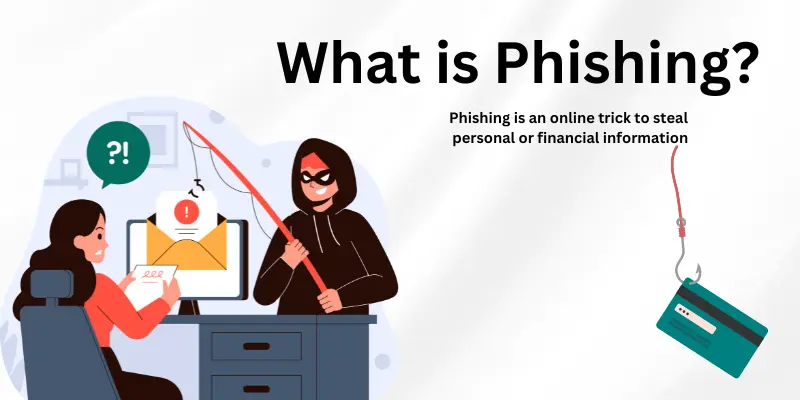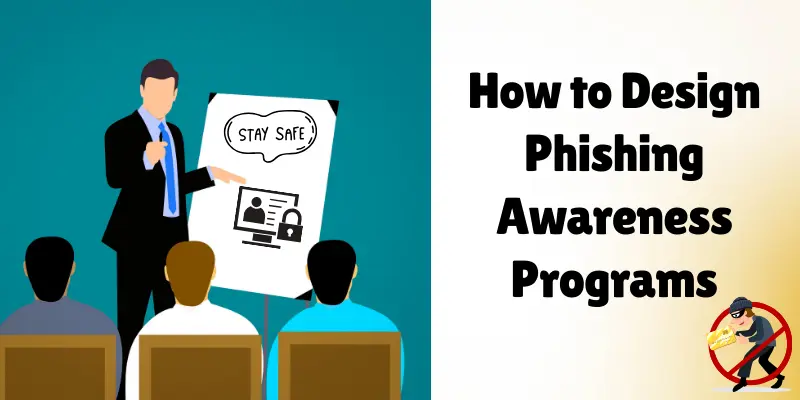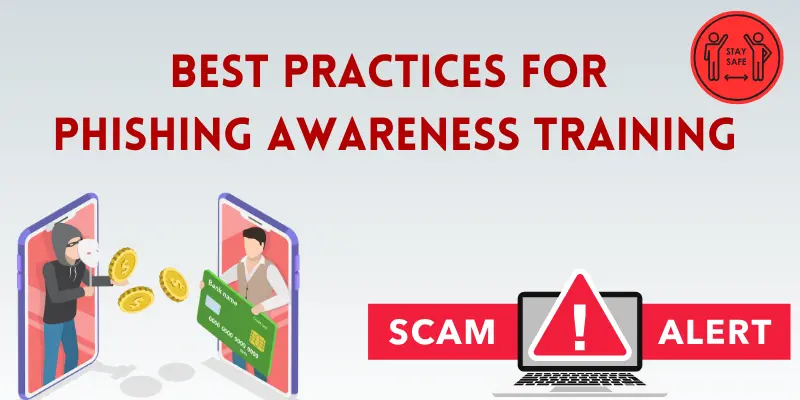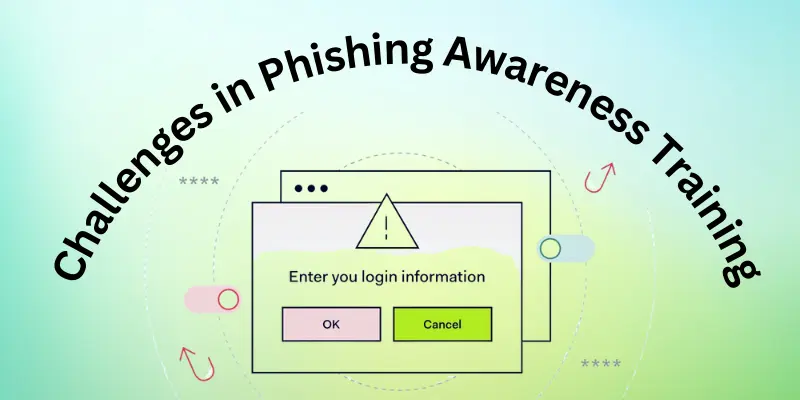Beginner’s Guide to Phishing Awareness
In today's digital age, cybersecurity has become a top priority for organizations of all sizes. As cyber threats continue to evolve, phishing remains one of the most prevalent and effective methods used by cybercriminals to compromise sensitive information.
Phishing attacks deceive employees into divulging confidential data, often leading to significant financial and reputational damage to businesses. To combat this persistent threat, implementing comprehensive phishing awareness training for employees is essential.
This guide will explore the importance of phishing awareness training, outline best practices, and provide actionable steps to create an effective training program.
What is Phishing?

At its core, phishing is a cyber attack that uses disguised emails or messages to trick individuals into revealing personal or corporate information. These attacks often appear to come from legitimate sources, such as trusted companies, colleagues, or government agencies, making them difficult to detect.
Phishing tactics can include fake login pages, malicious attachments, or requests for sensitive information like passwords or credit card numbers.
The success of phishing attacks largely depends on exploiting human psychology. Cybercriminals use social engineering tactics to create a sense of urgency or fear, prompting employees to act without thoroughly verifying the legitimacy of the request. This makes it crucial for employees to be able to recognize the signs of phishing attempts.
Importance of Phishing Awareness Training
Phishing awareness training is a critical component of an organization's cybersecurity strategy. By educating employees about the tactics used by cybercriminals and teaching them how to identify and respond to phishing attempts, organizations can significantly reduce their vulnerability to attacks.
Benefits of Phishing Awareness Training:
- Reduces Vulnerability – Employees learn to recognize phishing attempts, lowering the risk of cyberattacks.
- Creates a Security Culture – Training fosters awareness, empowering employees as the first line of defense.
Regulatory Compliance:
- Many industries, such as:
- Finance
- Healthcare
- Government
- Are required to implement security awareness programs.
- Regulations mandate regular training to protect sensitive data.
- Non-compliance can lead to hefty fines and legal repercussions.
How to Design an Effective Phishing Awareness Training Program?
Creating a strong phishing awareness training program helps protect an organization from cyber threats. A well-designed program teaches employees how to spot phishing attacks and respond correctly.

Follow these steps to design an effective training program.
Step 1: Understand the Current Threats
To create an effective training program, first, understand the phishing threats your organization faces. Cybercriminals use different tricks to steal information, so identifying common attack methods is important.
What to Do:
- Analyze past incidents – Look at previous phishing attacks in your company to find patterns.
- Identify phishing types – Understand attacks like email phishing, smishing (SMS phishing), and spear phishing.
- Check employee vulnerability – Conduct surveys or tests to see how well employees can detect phishing.
- Monitor cybersecurity trends – Stay updated on new phishing tricks and threats in the industry.
Step 2: Set Clear Goals
A good training program needs specific goals. This helps measure success and makes the training more effective.
What to Do:
- Reduce phishing attacks – Train employees to recognize phishing attempts and avoid falling for them.
- Improve response time – Teach employees how to react quickly to phishing threats.
- Increase phishing reports – Encourage employees to report suspicious emails instead of ignoring them.
- Ensure compliance – Follow industry rules that require security training.
Step 3: Create Engaging Training Content
Training should be interesting and interactive. Boring content won’t keep employees engaged.
What to Do:
- Use different formats – Include videos, quizzes, interactive exercises, and live demonstrations.
- Share real-life examples – Show past phishing attacks and their consequences.
- Provide hands-on practice – Let employees test their skills through phishing simulations.
- Keep lessons short and focused – Use micro-learning (short training sessions) for better retention.
- Make content easy to understand – Avoid technical jargon and use simple language.
Step 4: Encourage Learning Culture
Phishing threats change constantly, so training should never be a one-time event.
What to Do:
- Update training regularly – Refresh training materials to include the latest threats.
- Offer refresher courses – Re-train employees every few months to reinforce their skills.
- Encourage employees to share experiences – Let them discuss phishing emails they’ve seen.
- Send security tips – Share regular updates via email or internal newsletters.
Step 5: Test Employees with Simulated Phishing Attacks
Simulations are one of the best ways to check how well employees can detect phishing.
What to Do:
- Create fake phishing emails – Design emails that look real but are safe.
- Monitor employee responses – See who clicks on fake phishing emails and who reports them.
- Analyze results – Identify common mistakes and adjust training accordingly.
- Repeat tests regularly – Conduct phishing tests every few months.
Step 6: Provide Instant Feedback and Support
Giving employees quick feedback helps them learn faster and correct mistakes.
What to Do:
- Give immediate feedback – If someone falls for a phishing test, explain why it was a fake email.
- Highlight good performance – Recognize employees who correctly spot phishing attempts.
- Provide extra training if needed – Offer additional learning sessions for those who struggle.
- Create a clear reporting system – Make it easy for employees to report phishing emails.
Step 7: Reward Employees for Safe Practices
Encouragement and rewards help employees stay motivated to follow cybersecurity practices.
What to Do:
- Praise employees who report phishing attempts – Recognize their efforts in meetings or newsletters.
- Use gamification – Create leaderboards or reward points for good security practices.
- Offer small incentives – Give rewards like certificates, badges, or gift cards to top performers.
- Make security a team effort – Encourage departments to compete in phishing awareness challenges.
Step 8: Track Progress and Improve the Program
A good training program always evolves based on results and feedback.
What to Do:
- Measure success – Track phishing attack rates, employee response times, and reporting rates.
- Gather employee feedback – Ask employees how the training can be improved.
- Stay updated on new threats – Monitor cybersecurity news and update training materials.
- Keep leadership involved – Get senior management to support the program and set a good example.
Best Practices for Phishing Awareness Training

Here are some best practices to follow:
1. Key Indicators of Phishing
To help employees spot phishing emails, it’s essential to recognize certain signs. These key indicators can make it easier to tell whether an email is legitimate or a phishing attempt:
- Suspicious Email Addresses: Phishing emails often use fake or slightly altered email addresses. Be cautious if the email address seems off, such as a misspelled company name or unfamiliar domain.
- Urgent Requests: Phishers often use urgent language like "Immediate action required!" or "Your account is at risk!" to push recipients into acting quickly without thinking.
- Poor Grammar: Emails with strange phrasing, spelling mistakes, or incorrect grammar are common in phishing attempts. Legitimate companies typically send well-written emails.
2. Common Phishing Methods
Phishing attacks can take many forms. Recognizing the different types of phishing methods will help employees avoid falling for them:
- Email Phishing: The most common form of phishing. Cybercriminals send fake emails that appear to be from trusted sources to steal personal information.
- Spear Phishing: A targeted form of phishing where attackers gather specific information about an individual to create personalized, convincing emails.
- Smishing (SMS Phishing): Attackers use text messages to trick people into clicking links or sharing personal information.
- Vishing (Voice Phishing): Phishers call employees pretending to be legitimate organizations, asking for sensitive information over the phone.
3. Tools and Resources
To enhance phishing awareness and ensure employees can recognize phishing attempts, there are several tools and resources available. These tools help train, simulate, and report phishing attempts:
- Phishing Simulation Tools: Tools like KnowBe4 and PhishMe simulate phishing emails to train employees and track their responses.
- Security Awareness Platforms: Platforms that offer phishing training, quizzes, and other resources to keep employees informed about current threats.
- Reporting Tools: Use tools like “Phish Alert” to make it easy for employees to report suspicious emails to the security team immediately.
Common Challenges in Phishing Awareness Training
Phishing awareness training is essential for protecting organizations from cyber threats.

However, organizations face several challenges in making this training effective. Below are common issues, along with solutions to overcome them:
1. Lack of Employee Engagement
Problem: Employees might find phishing awareness training uninteresting or irrelevant, leading to low participation or lack of attention.
Solutions:
- Make training fun and interactive with quizzes, videos, and games.
- Keep the lessons short and easy to understand.
- Offer rewards for completing the training, like certificates or small prizes.
2. "It Won’t Happen to Me" Mindset
Problem: Employees may think they are too smart to fall for phishing or that phishing attacks target only large corporations.
Solutions:
- Share real-life stories of phishing attacks happening to others.
- Show how easy it is for anyone to fall for phishing emails.
- Run simulated phishing tests to show how employees could make mistakes.
3. Evolving Phishing Techniques
Problem: Phishing tactics are constantly evolving, making it difficult for employees to recognize new types of attacks.
Solution:
- Update the training regularly to include new phishing tricks.
- Use phishing simulations to test employees with new types of attacks.
- Encourage employees to stay updated on the latest phishing threats.
4. Inconsistent Training Across Teams
Problem: Different teams may receive different levels of phishing training, leading to security gaps in some areas.
Solutions:
- Make sure all employees, no matter their job, get the same training.
- Run company-wide training sessions for everyone.
- Customize training for different teams (e.g., IT, executives) based on their risks.
5. Limited Resources for Continuous Training
Problem: Organizations may lack the time or budget to conduct frequent phishing training or run multiple simulations.
Solutions:
- Use affordable, online tools for training and simulations.
- Keep training sessions short but regular (e.g., once every few months).
- Use free phishing tests to check employees' responses.
6. Lack of Immediate Feedback
Problem: Without immediate feedback, employees may not understand what they did wrong when they fall for a phishing attempt.
Solutions:
- Give quick feedback after training or phishing tests.
- Explain what went wrong when someone falls for a phishing test.
- Make it easy for employees to report suspicious emails and get answers.
7. Ensuring Long-Term Retention
Problem: Employees might forget what they’ve learned about phishing over time, making the training ineffective.
Solutions:
- Hold short refresher sessions every few months to keep knowledge fresh.
- Send regular, simple security tips via email.
- Keep testing employees with phishing simulations to help them remember what to look out for.
Conclusion
Phishing awareness training is an essential investment for any organization looking to protect its assets and reputation in the face of increasing cyber threats. By educating employees and fostering a culture of security awareness, businesses can significantly reduce their risk of falling victim to phishing attacks.
Implementing a well-designed training program, supported by regular simulations and continuous improvement, is key to empowering employees to act as vigilant defenders against cybercrime.



Please Write Your Comments